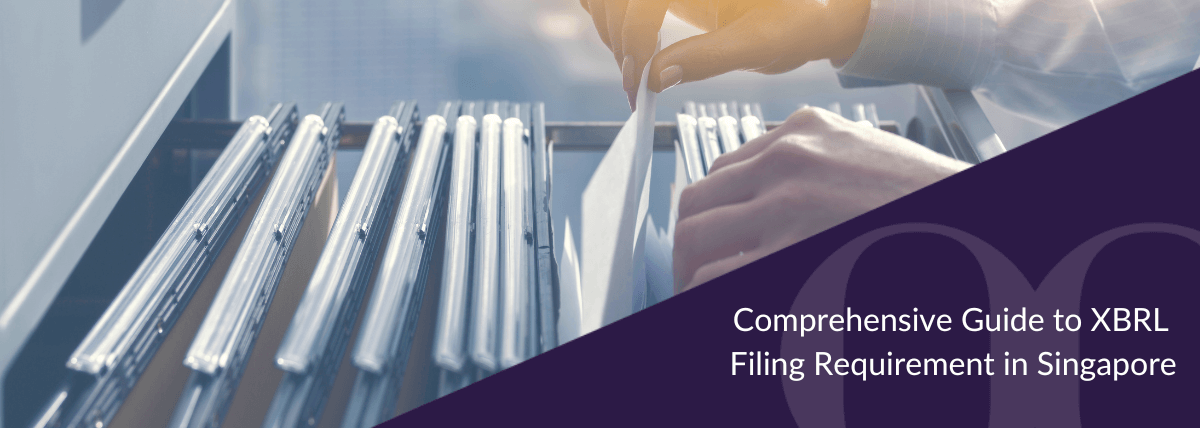4 Services that a Top Share Registrar Provides
Unless you are experienced in working with the capital markets, most would be unfamiliar with the differences between the types of services provided by different Share Registry Services providers.
What Is a Share Registrar?
Some basic roles of a Share Registrar that most are aware of would be maintaining the register of shareholders for their listed and unlisted clients and ensuring that all Corporate Actions are processed according to the regulations listed by the Singapore Exchange (“SGX”). However, a top share registrar should go beyond these basic services and add value to their clients by providing a one-stop-shop approach to their service offerings. In this article, we’ll discuss the 4 important services a top share registrar should provide.
01 Share Registrar Provides Secure Process and Services for Clients’ Personal Data Protection
An excellent share registrar takes on the task of liaising with regulatory parties such as SGX to ensure important information like the shareholder registers and lists of active shareholders are actively maintained. This is a standard service offering for a share registry provider. However, what differs between service providers are their policies and procedures around personal data protection.
The information housed in the share register contains highly sensitive personal data like residential addresses and identity numbers, which are considered personal data. In Singapore, personal data is protected by law under the Personal Data Protection Act (“PDPA”). A professional Share Registrar will not only have strict policies and procedures in place to demonstrate compliance with the PDPA but will also go one step further and showcase Accountability through the appointment of and regular training of their Data Protection Officer (“DPO”). To learn more about why Accountability in Personal Data Protection is important, take a look at our joint article with the leader in Personal Data Protection governance, Straits Interactive.
02 Share Registrar Helps Shareholders Communicate with Meeting Services: AGMs/EGMs/SGMs
Under the Accounting and Corporate Regulatory Authority (“ACRA”), all companies are required to hold Annual General Meetings (“AGM”) within four months after their financial year end (“FYE”). An exceptional share registry provider will offer meeting services to ease the stress of arranging for such meetings.
Other significant shareholder meeting services that a share registrar will provide are Extraordinary General Meetings (“EGMs”) or Special General Meetings (“SGMs”). These meetings are typically irregular and usually call for issues that require immediate resolution, such as legal matters. As AGMs and EGMs are often a good gauge for shareholders to judge the company’s status, a successful shareholders’ meeting is crucial to boost stakeholders’ confidence in the company.
Given AGMs & EGMs involve important stakeholders voting on the passing of resolutions, a holistic package of meeting services should be offered to meet the needs of clients. AGMs and EGMs include several key stages: pre-meeting, during the meeting, and post-meeting, each with its own unique set of needs. We have listed the services an experienced Share Registrar would provide at each stage below.
Pre-meeting
- Advise on event planning,including the recommendation of vendors for catering, venues, and expected timelines
- Prepare and coordinate the printing and sending of Companies’ Annual Reports to shareholders
- Process proxy forms and generate reports for clients to get an idea of the general sentiment regarding certain resolutions before the meeting
- Sourcing of scrutineers if the Share Registrar is the registered Polling Agent
- Prepare proxy summary listing based on the valid proxy forms received
- Arrange fora site survey and dry-run at the meeting venue prior to the meeting (if necessary)
During the Meeting
- Manage the attendees through attendance taking and ushering of shareholders
- Verifythe attendee’s particulars to ascertain their identity as a valid shareholder before admission
- Provideup-to-date attendance registration status
- Run the pollingwith the support of relevant IT personnel
- Provide Scrutineering services, provided the Share Registrar is not the registered Polling Agent. If they are, they are unable to provide this service
- Compute thepolling results
Post-meeting
- Generate an official certificate with the resolutions and polling results for the perusal of the Board of Directors and Chairman
- Generatereports including information on shareholder attendees, audit trails on voting instructions by shareholders, to name just a few
Outside of this, an experienced share registrar should be pre-emptive and adapt quickly to changes. In a post-COVID era, hybrid AGM meeting modes have become the mainstream approach for companies embracing flexibility to navigate this new norm. This brings about unique challenges and increased responsibilities for share registrars as there is no longer a clear default mode for either physical or virtual meeting. As a result, any exemplary service provider should adapt and impartially cater to the needs of both the online and offline shareholders.
03 Share Registrar Offers a Variety of Polling Solutions and Services
There is no “one size fits all” polling service. Share registrars should anticipate the various needs of clients and advise companies on which polling solution is most suitable for them based on factors such as the number of shareholders or the company’s budget.
Detailed below are the common types of polling services in Singapore today:
- Manual Polling/Voting– Executed through paper and pen with the share registrar manually counting the votes during a meeting. It can also be a semi-automated process where details and votes are captured electronically on a polling/voting solution. Typically used by companies with a small to medium shareholder base, the time taken can be longer due to the manual work needed as headcount increases.
- Electronic-polling/Voting– Administrated via handsets and smart cards provided to shareholders, a card reader is used to capture information that collates and displays results instantly. Companies that usually engage this are the ones with a sizeable shareholder base where speed and real-time polling data are important.
04 Share Registrar Provides Support Services for IPO Listing
Whilst a lot of the services discussed above are post-Initial Public Offering (“IPO”), an important role of a Share Registrar should be to support clients before and throughout their IPO listing journey. A professional share registry service provider offers support through advising on the SGX requirements for a successful listing in Singapore. There are many unknowns on an IPO journey; a capable share registrar will have experience across a variety of situations to ensure they can advise on the necessary actions for a seamless experience founded on compliance and best practice governance. Some common areas an experienced share registrar can support are:
- Backend processes such as IPO application, IPO subscriptions,and IPO administration
- Both local and inbound overseas companies have specific requirements for IPOs;a Share Registrar experienced in regional dealings will be able to safeguard businesses from compliance risks
In Conclusion: Share Registrar Provides Diverse Services for Efficient Share Management and Regulatory Compliance
An exemplary Share Registrar should offer an astute suite of services that cater to clients’ needs. They should be proactive in all their dealings and prioritise delivering a service that alleviates administrative burdens. A good share registrar can be the make or break for maintaining valuable shareholder relations and ensuring compliance with all local regulations to avoid any potential loss of reputation or monetary fines.
BoardRoom – Share Registry Services in Singapore
As one of the leaders and pioneers in the share registry industry, BoardRoom has over 50 years of experience guiding many listed corporations in the APAC region. Our expertise is trusted by close to 50% of SGX-listed companies, helping them to save time and money by delegating time-consuming administrative tasks to our dedicated team. We have comprehensive knowledge of compliance requirements across major stock exchanges in the region, including SGX, BURSA, HKEX, and ASX, providing expert advice and seamless coordination of your share registry services regardless of where your company is listed. Contact our Share Registry Services experts for your personalised consultation and see how we can add value to your business today.
Wondering what insights and experience a seasoned share registrar can bring to the table? Explore our full report on 2023 Singapore AGM Insights Report that we observed from our vast experience in handling a wide range of clients in the 2023 AGM season.




